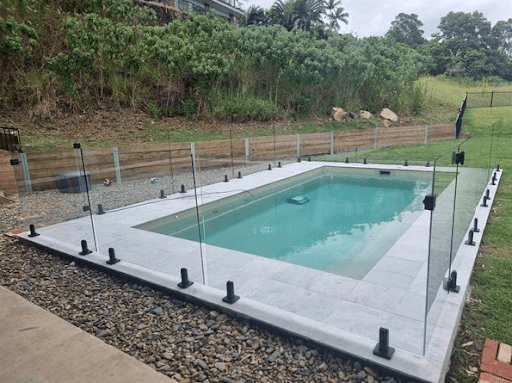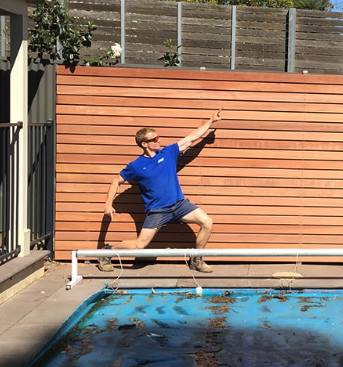Building in the Bush: Top Landscaping Tips for Regional Homes
Posted by Lee Benson on 18th Apr 2025
Offering a spectrum with infinite natural colours, sizes, shapes and foliage, building a garden landscape in the bush is a venture with plenty of opportunities to pull from the surroundings. But with so much room for creativity, it’s important to hone your vision on something that will work for your space and functionality needs and choose wisely when it comes to materials and features. That way, you can also make your landscape easy to clean and maintain and optimised for its local climate.
Rural property design and investing in your landscaping is about a lot more than boosting the value of your rural property, although this is a very welcome effect. It’s equally important that it elevates the feeling, tone and comfort of your home, so you can feel more connected and rejuvenated in your space.
There are many unique considerations when landscaping for regional homes, like plant textures that complement bushland, protection from the elements or interactions with wildlife. With the right approach, your outdoor space can become an extension of the natural world around you, while still offering comfort, function and personal style. As proud suppliers of many durable and stylish outdoor features, Outback Fencing are happy to provide our top landscaping tips for designing your dream garden in the bush below.

- Install Perimeter Fencing That Blends Style with Function
- Balance Open Space with Functional Zones
- Work With the Landscape, Not Against It
- Choose Native Plants for Beauty and Low Maintenance
- Create Shade and Shelter
1. Install Perimeter Fencing That Blends Style with Function
When designing a landscape that complements your rural property design, go for a multi-functional, low-maintenance fence that protects your plants and features from the Aussie elements while adding to your aesthetic style. These days, you’re spoilt for choice when selecting fencing styles designed for Australian homes. Fences from brands like Colorbond Fencing are built to last in the Australian bush and come in a huge range of colours and styles. Beyond wind and sun protection, a strong, secure fence boosts your family’s privacy while providing a wonderful backdrop for your plants and garden to shine.
Outback Fencing stocks a wide range of versatile Colorbond colours, which means there is a perfect style option for everyone. If your regional property is near the coastline, colours like Surfmist and Dune can thread the thematics of the natural landscape into your backyard perfectly. For those who live more inland or in the country, opting for a more earthy and grounded colour, like Shale Grey, Ironstone or Cottage Green, will give you a strong, distinct and elegant look. Wallaby and Woodland Grey, on the other hand, can perfectly complement bushland and forest regions. So, consider your setting and the colours in the natural environment around you when choosing your fencing. If you do choose Colorbond, check out our guide on how to install a standard Colorbond fencing panel, and then you can install it yourself and save on installation costs.
With Aussie-made steel that’s rust, mould and corrosion resistant, you can let the torrential rains wash over you and the blistering sun nourish your land without a worry. Colorbond Fencing also has an ignitability index of 0, so it can provide some extra peace of mind for those who live in a high-fire-risk area.
2. Balance Open Space with Functional Zones
When you're working with a big block, the sheer amount of space can feel a little overwhelming. The art of functional landscaping begins by first identifying how you want to use your outdoor area – dining, relaxing, growing food or kids’ play areas, for example, or how you want spaces to feel, like expansive, quaint, charming – and carve out distinct zones to accommodate. There are likely to be areas you need, like places to eat and for the kids to play, so plan where those will be and how you want them to look.
Once these are planned, you can select the materials you’ll use to build them. For rural property design, organic, natural materials provide a balanced and sensical look that blends with the surrounding environment. They’re also typically easy to clean, so you can breeze through your spring cleaning checklist for your garden when the time comes. Use natural materials like wooden patios, timber sleepers, gravel or recycled bricks and limestone walls to define spaces without feeling overly structured. The goal is to create a flow that feels natural while still giving each area a purpose.
For front garden design, there is usually less room to work with, so try to keep things simple yet pronounced. If you have a pergola, consider creating a sitting space and keeping the garden subtle and sparse so as not to take too much away from the entrance of the home. Semi-privacy PVC picket-fencing with a hedge line behind it offers a beautiful entrance, and layering and protects your home from the elements. PVC fencing is one of the most durable fencing styles and needs little maintenance, so its long life makes for a fantastic investment.
3. Work With the Landscape, Not Against It
Regional land blocks often come with terrain slopes, natural rock outcrops or mature native vegetation, and that’s something to embrace, not flatten. Instead of bulldozing the land, consider how you can work with its contours. If you have slopes, you can cultivate grass or shrubs that cultivate the natural curvature of the land, elevating the lovely character that is already there. Or, you could install a natural stone or concrete sleeper retaining wall to create beautiful tiers of flat land, which would provide more room for features or for kids to play safely.
If your backyard is an unusual shape or you don’t know what to do with an obscure shape on your land – maybe it is simply long or awkward – you can design zones that follow the natural shape. For example, you could add cabanas or limestone walls with a dining setting to a section of a piece of land or build winding pathways to connect the land in a cohesive, charming way. Design the pathway to your needs or style – you can make it super practical with composite decking, quirky with stepping stones or patterned pebbles or more pronounced and distinguished with limestone pavers, green grass and overhanging trees framing the path.
4. Choose Native Plants for Beauty and Low Maintenance
Native plants are like the bread and butter of your meal in Aussie bushland landscaping. They’re hardy, drought-tolerant, designed to thrive in the local soil and climate, and they suit their surrounding environment perfectly because they were born there! Plus, designing with garden plants helps attract birds, bees and butterflies – bringing your garden to life.
When it comes to selecting exactly which natives, look for species that naturally occur in your region. To design an Australian native garden, try to contrast larger trees or plants with smaller, more refined and colourful plants scattered throughout. Think a mix of grass trees, grevilleas, banksias, wattles or kangaroo paws. They offer striking foliage and flowers without demanding constant care or water, making your landscape sustainable and stunning year-round.
5. Create Shade and Shelter
It’s hard to escape the sun in the Aussie bush. And while the sunlight and heat are a source of Aussie pride, your home should be somewhere where you can get some reprieve. Create areas of shade so you can soak up the tranquillity of the great outdoors while staying safe and comfortable. Add elements like pergolas, trellises and tree plantings to create shaded outdoor zones, or if you have exposed tiling or brick, you can use some hardy PVC planter boxes to add some shady greenery, which are made to endure the worst of the sun.
Alongside this, the ultimate buffer from the heat is a swimming pool, so you should consider whether this is something you want to incorporate into your design. These days, there are so many innovative pool fencing materials and styles that make it easy to design one that fits your style. For contemporary homes, designer pool fencing not only provides pool safety but it adds to the stylish feeling of your garden with its floating batten design. If you’re designing a true-blue Aussie backyard, glass pool fencing offers a neutral yet stylish look that creates a seamless flow between the pool and garden.
Alternatively, a great garden design budgeting tip to avoid building a pool, pergola or terrace is to include a windbreak or outdoor shade sails anchored to poles. These can look elegant near trees or blend between features, like in front gardens when there isn't much space to work with.
Building in the Bush: Features Optimised for the Local Climate
Building a garden in the bush is a venture in creating comfort within an oasis. When that oasis is known for its extreme heat and windy conditions, the design task is a matter of balancing function, durability and style. By considering how you can work with the land, finding the best fencing for windy areas or heat, how to section areas cohesively and which plants to use, you’ll have a lot of the elements needed to start designing.
Then consider which materials are made to suit the environment and weigh up the differences between traditional and modern, like between steel, PVC and timber fencing. Threading in colours and textures of the natural bushland landscape into your garden design helps to bring tranquillity, beauty and calm into your space, and pays homage to the wonderful area you’ve chosen to call home.
Outback Fencing is a proud supplier of outdoor fencing and many other materials to Australian homes. We’re passionate about outdoor products that help us enjoy the beauty of Australia while staying safe and comfortable. So, if you need some advice or guidance along your bushland garden design journey, you can reach out to us or explore our blog for more landscaping tips for regional homes.


